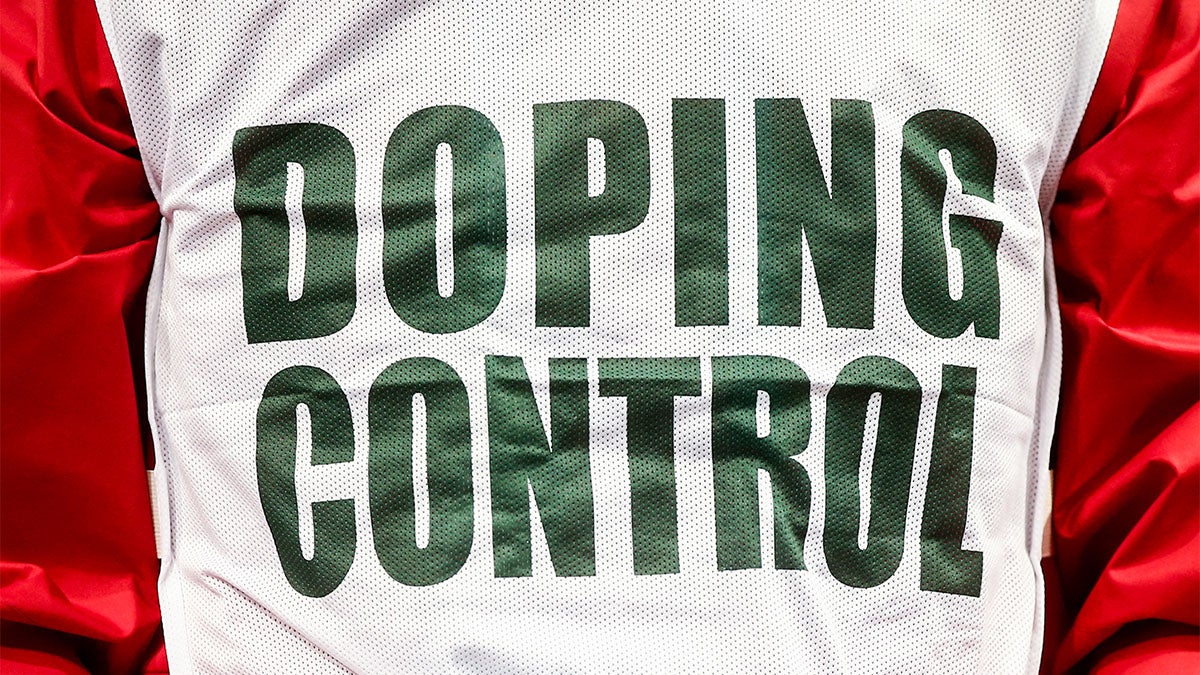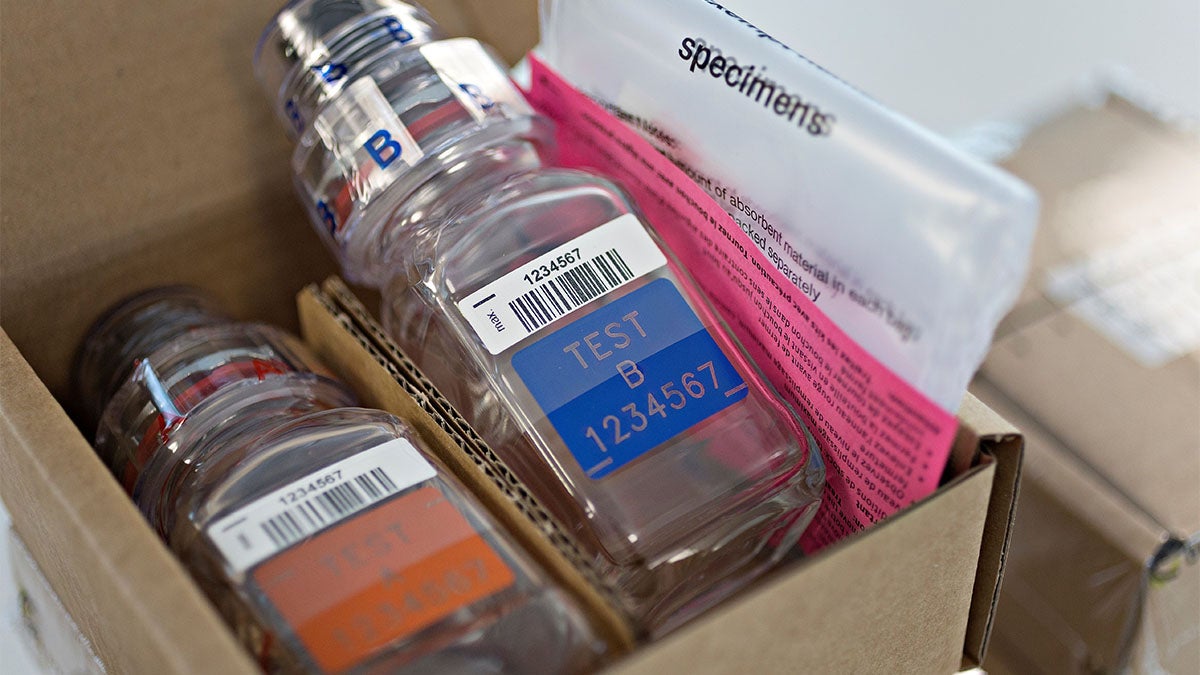Mexico City Games became launch pad for athlete doping tests
Why this matters
In 2018, Global Sport Matters and the Global Sport Institute commemorated the 50th anniversary of the seminal moment of the Mexico City Games, when Americans John Carlos and Tommie Smith raised a black-gloved fist from the medals podium. We took a look back at the year from a global sporting perspective.
From the World Series helping a wounded Detroit heal to athletic innovations that trace their origins to those Olympics, 1968 served as a critical pivot point in the role sports plays in society and introduced the modern era of athlete activism. Read all the stories here.
At the 1960 Rome Olympics, Danish cyclist Knud Jensen collapsed after completing the 100-kilometer time trial, fatally fracturing his skull in the process. The first death of an athlete during Olympic competition sent shockwaves through the media and Olympic committee.
However instead of the cyclist being remembered for his athletic achievements, his death is remembered as the beginning of the Olympic anti-doping movement.
After Jensen’s death, Danish cycling team trainer Oluf Jorgensen admitted to providing Jensen and his teammates with the drug Roniacol. The admission led to greater scrutiny and disclosures that performance enhancing drugs had become an institutional epidemic.
The use of performance-enhancing drugs was not yet outlawed or regulated in the sports world. In fact, many athletes that participated in football, cycling and other professional sports at the time proudly doped in training and on game day.
“Ethical objections to doping did not exist in the beginning of the high-performance era, in part because leveraging scientific advantages seemed the natural solution in the battle between the body and fatigue,” said author Matthew Hard in the Southern California Interdisciplinary Law Journal.
In fact, the first uses of performance enhancing drugs in sport can be traced to the beginning of the 20th century.
In 1904, American runner Thomas Hicks competed in the marathon during the St. Louis Games under the influence of a mixture of brandy, raw eggs and strychnine. Even though he collapsed at the finish line and was unresponsive for 10 minutes, his performance in the event garnered heavy praise from U.S. Olympic historian Charles Lucas. Of Hicks performance, Lucas wrote, “The Marathon race, from a medical standpoint, demonstrated that drugs are of much benefit to athletes.”
[beauty_quote quote='“Ethical objections to doping did not exist in the beginning of the high-performance era, in part because leveraging scientific advantages seemed the natural solution in the battle between the body and fatigue.” -author Matthew Hard ']
He further praised athletes who used dangerous, ergogenic drugs in international competition. Athletes who used these drugs in the face of dangerous health complications were seen as American heroes who would put their lives on the line to “bring America the Marathon honors.”
The 1952 Olympiad held in Helsinki, Finland, was the first Olympic Games that the Soviet Union participated in. That nation’s athletes did so well in the weightlifting events that United States coach Bob Hoffman was convinced they were using testosterone. In fact, a Soviet Union team physician mentioned to John Ziegler, his American counterpart, they were.
Ziegler believed the Soviets were abusing the drug so irresponsibly that their athletes were “having to get catheterized.”
Rather than denounce the dangerous substances and prompt the Soviets to unhealthily sculpt their bodies using performance enhancing drugs independent of team supervision, Ziegler used their results as an opportunity to introduce the drugs to his team. American athletes saw immediate results, and the use of the substance, at the time known as Dianabol, began to spread to other U.S. teams.
“Within the United States and among its Communist rivals, a ‘sportive nationalism’ blinded sport officials to the urgency of the problem,” wrote Thomas Hunt, a professor of Kinesiology and Health Education at the University of Texas at Austin.
During the 1956 Summer Olympic Games in Melbourne, Australia, there were many rumors of U.S. track and field athletes using testosterone and amphetamines. Although the IOC and International Association of Athletics Federation (IAAF) knew about the rumors, both organizations refused to take any action. Investigating the use of performance enhancing drugs seemed preposterous to officials at the time.
When athletes saw the relative impotence of the IOC regarding the regulation of anti-doping practices in the Olympics, the use of drugs became more rampant than ever.
However, the death of Jensen proved the tipping point. Coupled with the rise of mass media coverage of the Olympics, the death prompted the IOC to prioritize reforming the rules and regulations regarding doping.
In March 1962, an IOC sub-committee, the medical commission, was created by IOC President Avery Brundage. The commission’s primary purpose was to create a “reasonable and realistic anti-doping plan of battle.” This was the first time in the history of the Olympics that medical and science professionals were going to use research to outline the dangers and restrictions of drug use. Prior to this, the IOC generally ignored data regarding health issues, and committees were made up of officials with little to no experience in this field.
[beauty_quote quote='“Within the United States and among its Communist rivals, a ‘sportive nationalism’ blinded sport officials to the urgency of the problem.” -University of Texas Kinesiology and Health Education professor Thomas Hunt ']
However, the medical commission was not tasked with developing and implementing a drug testing program for the Mexico City Games until 1966. For the first official implementation of doping tests in Olympic history, the commission released a list of prohibited substances that included alcohol, cocaine, vasodilators, opiates, amphetamines, ephedrine and cannabis. Anabolic steroids were not on the initial list because scientists did not yet have a way to test for them.
At the Mexico City Games, a combination of the medical commission and international federations contributed to the administration and execution of the tests. Officials selected a sport at random each morning of competition and tested 10 athletes if it was an individual sport or two per team if it was a team sport.
A total of 803 females competing in the Olympics submitted to buccal scrapings (taken from inside the mouth), testing their chromosomal pattern. Also, using gas chromatography methods, 670 urine samples were collected during the testing phase of the Olympic Games.
Contrary to the expectations of the medical examiners, only two positive indications of amphetamine use were found out of the 670 total tests.

Why?
When asked afterward about the rampant drug use by athletes at the games, an anonymous American weightlifter said he thought the medical commission went about the drug testing wrong.
“What ban? Everyone used a new [performance-enhancing drug] from West Germany. They couldn’t pick it up in the test they were using,” said the American Olympian. “If a technique … is established as official, it is relatively easy to administer drugs that cannot be identified. When they get a test for that one, we’ll find something else. It’s like cops and robbers.”
The realization by the medical commission that many of the tests coming back negative contained abnormal chemicals in their samples provided a clear warning to the IOC that "Waging War against Doping” was going to be a much bigger fight than anyone imagined.
The Mexico City Olympics formed the basis for the massive framework of future anti-doping efforts in Olympic competition and changed the perception of drug use in professional sports, too.
[beauty_quote quote='“If a technique … is established as official, it is relatively easy to administer drugs that cannot be identified. When they get a test for that one, we’ll find something else. It’s like cops and robbers.” - unnamed American Olympian']
After Mexico City, the medical commission began to treat drug use as a serious issue, and the results mirrored their interest. Full-scale comprehensive drug testing for narcotics and stimulants took place in the 1972 Munich Olympic Games. Steroids became a banned, testable substance in 1976, when the Montreal Games produced 11 positive results out of 786 drug tests.
As the 1980s and early ’90s unfolded, the IOC was joined in the war against doping. President Ronald Reagan signed the Anti-Drug Abuse Act of 1988, officially outlawing the sale of steroids for non-medical use in the United States. The U.S. Congress passed the Anabolic Steroids Act in 1990 that placed the substance under same legal classification as other dangerous drugs such as methamphetamine and opium.
If it weren’t for the adoption of anti-doping regulations during the 1968 Mexico City Olympics, Major League Baseball’s ban on steroids in 1991 and the ensuing years of fighting between athletes and other professional sports leagues in America such as the NFL and NBA would have a different timeline and tone.
Today, the war against doping continues — as does the game of cops and robbers described by the anonymous American Olympian in 1968.
The IOC banned Russia from participating in the 2018 Winter Olympics in Pyeongchang, South Korea, due to a statewide doping program that critics said rivaled only the East Germans in the 1970s and ’80s.
According to the New York Times, “The International Olympic Committee, after completing its own prolonged investigations that reiterated what had been known for more than a year, handed Russia penalties for doping so severe they were without precedent in Olympics history.”
Those changes to anti-doping policy made by the IOC for the 1968 Games, even in their rudimentary beginning and relative ineffectiveness, led to more than a half-century of actions taken to prevent the use of illegal or banned substances from spreading.
Ross Andrews is a senior journalism student at Arizona State University


